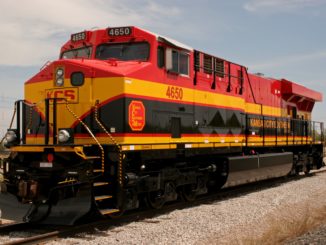MONTREAL — A $2-billion private-public partnership between Canadian Pacific Railway and the federal government could take more than a million trucks a year off Highway 401 between Montreal and Toronto, and lay the foundation for high-speed intercity passenger rail service, the railway’s chief executive officer said here today.
Speaking to the Canadian Railway Club, Rob Ritchie said such a partnership of government and private industry would be a cheaper, smarter alternative to yet more taxpayer-funded highway expansion and add-on maintenance costs. He added that the rail alternative to expanding one of the most congested highway corridors on the continent is an example of the rail industry’s untapped potential for generating greater economic growth and helping to solve some of the country’s most troubling public issues.
“Simultaneously, we would improve the efficiency of the trucking industry and help solve some of the traffic congestion and pollution problems in Montreal and Toronto. We would make the Canadian economy more productive and efficient and provide VIA Rail an opportunity to expand high-speed inter-city passenger rail service,” Ritchie said.
He said CPR’s proposed Detroit River Tunnel Project linking Windsor and Detroit is another example of the practical solutions rail can offer. CPR and its partner want to build a new rail tunnel under the Detroit River and convert CPR’s existing rail tunnel into a two-way roadway for international truck traffic. CPR has requested half of the $300 million in joint federal and Ontario funding for border crossing upgrades.
Windsor-Detroit is the world’s busiest border crossing, with 10,000 trucks converging every day on Windsor. “As things stand now, 10 per cent of Canada’s GDP moves down a municipal street in Windsor with 16 traffic lights,” Ritchie said.
Both projects would support improved and expanded trade flows in the Montreal-Chicago corridor, Ritchie said. “This is one of the largest and most important trading lanes in the world. Montreal is the closest international port to North America’s industrial heartland. CPR’s Montreal-Chicago rail corridor provides the shortest route for European cargo destined to the U.S. Midwest,” he said.
But instead of unleashing rail’s potential, governments discriminate against the rail industry through taxation policy that amounts to a pure tax grab and that skews shipper choice in favor of roads.
Ritchie said Canada’s railways pay a total of $300 million a year in fuel and property taxes alone. A portion of their fuel taxes is funneled by governments into highway expansion and maintenance. Property taxes are levied on every inch of the railways’ track, though governments provide no service in return. These taxes create an uneven playing field in transportation.
“This is a tax grab, pure and simple,” Ritchie said. “And, even worse, this is a tax grab that contributes to diminishing the role of railways. It confiscates money the railways would otherwise invest to the benefit of rail users and the general economy.”
He urged governments to eliminate these taxes. In doing so, they would forego revenue that the railways would invest to provide practical solutions to the problems of traffic congestion, customs line-ups, greenhouse gas emissions, and ever-rising road costs.
In the absence of fundamental taxation and regulatory reform, Ritchie said public-private partnerships would be a first step to leveling the transportation playing field.




